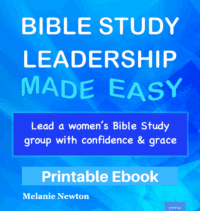3 Steps to Inductive Bible Study

Do you know what the best way to study the Bible is? It is the 3-step Inductive Bible Study method: 1) Observation, 2) Interpretation, then 3) Application. This method ensures that you are getting God’s truth and not error from your personal Bible Study. This article will explain how to follow that 3-step process as you study the Bible for yourself.
Key Takeaways
- The best way to study the Bible is using the 3-step Inductive Bible Study method: Observation, Interpretation, and Application.
- Understand the ABC’s (Author, Background, Context) before diving into any book of the Bible.
- Avoid the deductive method, which selectively interprets verses, and focus instead on context and the author’s intended meaning.
- Develop observation skills to grasp what the text communicates and allow the Holy Spirit to guide your understanding.
- Apply lessons personally, recognizing when a passage is descriptive versus prescriptive for consistent life transformation.
Having the Bible in My Language
The turning point of my own life came when I discovered the Word of God could be read, studied, and understood personally. Because of that, I appreciate the work of all those who made it possible for me to have easy access to the Bible in my own language. In the 1300s, John Wycliffe spearheaded the movement to translate the Bible into the language of the common people of his country which was English. His desire was that every person could read and learn from it. My second favorite character is William Tyndale who continued this effort diligently under extremely dangerous conditions. One historian put it this way,
A zeal to place the English Scripture into the hands of the common man burned in Tyndale’s soul. (Bruce Shelley, Church History in Plain Language, p. 268)
I am so glad it did because I am the direct beneficiary. And so are you. Now that we have this wonderful book in our language, we should then hungrily study it to get to know our gracious God and His way of approaching life. Book by book.
Setting the Context: “ABCs”
Before you study any book of the Bible, you need to have some basic information. These are called the “ABC’s.”
- Author—Who wrote the passage? Sometimes that is clear (Paul wrote his letters, Luke wrote Luke and Acts, Moses wrote Genesis through Deuteronomy). For other books, it is not as clear. That is okay. God knows and included it in His Word for us to have.
- Background—When did the author live? In what culture? What was happening as it was written or that led to its writing?
- Context—Where does the book fit into the Bible? How does the specific passage you are studying fit in with what comes before and after it?
Two Methods of Bible Study
There are two methods of Bible Study —inductive and deductive. Let us look at the difference, starting with “deductive.”
The Deductive Method
The deductive method starts with a topic or theme then selectively chooses Bible verses to “prove” whatever the author wants to prove, especially if it is a current fad or cultural position. Many topical studies use the deductive method. For example, you want to see what the Bible teaches about anger. So your Bible Study guide has you look up the verses that deal with anger and then you make applications from them. Topical studies can be valuable for us when we are wanting to learn about some aspect of the Christian life in particular. But I have two cautions about this method of Bible Study:
- Caution #1: The deductive method can be used to selectively choose Bible verses to prove anything that someone wants to prove. For example, someone could write a Bible Study with the premise that God wants you to be happy and not suffer and then select verses that talk about God wanting to make you happy and prosperous to prove that point.
- Caution #2: The deductive method feeds the “look-imagine-see” way of viewing the Bible, which leads to error. For example, someone looks at a verse or passage, imagines what they want it to say, and then “sees” in their mind what they have imagined through twisting word meanings and interpretations. Many types of false teaching through the years have started with this kind of “look-imagine-see” process. Avoid that!
The deductive process is an unreliable method for studying the Bible. Sometimes popular topics use this method. Just beware.
The Inductive Method
The best way to study the Bible is a 3-step process called the Inductive Bible Study method. The three steps are 1) observation, 2) interpretation, and 3) application. The process is more easily understood in the context of answering three questions:
- What does the passage say? (Observation: what is actually there)
- What does it mean? (Interpretation: the author’s intended meaning for him and the intended audience)
- How does this apply to me today? (Application: making it personal)
This is the best way to study the Bible to make sure you are getting biblical truth. Look at what is there. Learn what it means and teaches you. Then, live it out in your life.
All of our Joyful Walk Bible Studies follow the 3-step Inductive Bible Study method.
Let us look at what each of these 3 steps involves.
1) Observation: What Does the Bible Say?
Observation is the most important part of Bible Study. You are seeing what is there. We must learn what it says before we can understand what it means for us. A dear friend of ours used to say there were 5 steps to Bible Study: Observation, Observation, Observation, Interpretation, then Application. That is how important OBSERVATION is when you are studying God’s Word.
In my college geology major, I took several field study courses. The professors trained us to look at the path around our feet to see what kind of rock was there. As I go hiking to this day, I look around the path to see what kind of rock is present there—in the path, the rocks on either side, and rocks at the base of fallen trees. That stirs up my interest in the geology around me.
Observation pulls you into the text and stirs up interest in what God is doing and saying to you in His Word.
Ask Jesus to teach you
Start by asking the Lord Jesus to teach you through His Word. He will! He does that through the Holy Spirit inside you.
For who knows a person’s thoughts except their own spirit within them? In the same way no one knows the thoughts of God except the Spirit of God. What we have received is not the spirit of the world, but the Spirit who is from God, so that we may understand what God has freely given us. (1 Corinthians 2:11-12)
The Spirit of God helps us to understand what God has freely given us! His Word! That is awesome!
Get the big picture
Read the whole passage in one sitting to get the big picture before you study the verses more closely. Read it again as needed.
Answer some general questions:
- What grabbed your attention from your initial reading?
- Are there any specific words or phrases you want to understand better?
- Are there any words or phrases repeated in the passage?
- How does this passage communicate something related to the theme of your study, if available?
For narratives, gather additional facts like an investigative reporter asks questions: Who? What happened? What was taught? When? Where? How? Why?
Observation is where you see and discover what the author is saying. Following the above suggestions will help you notice all the information that is given in the text.
2) Interpretation: What Does It Mean?
Interpretation leads to understanding the author’s intended meaning. That is the only correct meaning of any text. You need to know what the author meant and what the author’s readers or listeners understood.
Your aim is to “hear” what the ancient authors and recipients “heard.” Then, you can determine what it means in the present and understand what it should mean to you.
Generally, there is only one intended meaning from the author. And the meaning of the author does not change over time. But there can be several things we can learn from that. This is where you examine what you observed.
Study each verse in context
The immediate context of any verse is its paragraph. The meaning derived from the paragraph must be consistent with the broader context of the chapter, book, other books by the same author, and the rest of Scripture. (Jerry Collins, “Interpreting the Bible”)
It is important not to read into a passage what we think it means without seeing how the author uses the words chosen in the context written.
Examine what you observed
Ask the Holy Spirit to help you understand the passage. Use study tools to help you with this.
- A dictionary, Bible dictionary, or tool such as the blueletterbible website or app to understand specific words or phrases.
- Other scriptures that relate to the passage (called cross-references). These are usually found in the margins of Bibles or in footnotes. What do other verses say about this thought or idea?
- A study Bible or commentary to understand anything that might be confusing or related to the customs and history affecting what the people understood. My favorite commentary is Dr. Tom Constable’s study notes on every book of the Bible. His notes compile hundreds of other quality resources in one place. Find these at soniclight.com.
You aim is to understand what the authors were saying to those reading or listening to their words. What would they have understood?
Without proper interpretative controls, people can attempt to make the Bible mean almost anything they want it to mean. (Roy Zuck, “Applying God’s Word in Your Life,” DTS Connection Extra Fall 2005)
That is the danger of the “look-imagine-see” way of using the Bible that I mentioned above. Avoid it!
Consider the type of literature
- Narratives (the books of Old Testament history plus the gospels and Acts in the New Testament) tell the stories of God interacting with people. What choices did they make? What were the consequences of their choices?
- Letters (like those of Paul, Peter, and John) are usually filled with teaching. Is the instruction relevant to all people in all times or something specific to that culture and time?
- Prophecy (Isaiah through Malachi in the Old Testament and Revelation in the New Testament) are like narratives in that they reveal God’s communication to people who are generally in need of encouragement or correction and their response to it.
- Poetry (Psalms) are generally personal reflections on who God is and how He relates to us in our daily lives.
Lessons for you today
After you have a good understanding of what the author meant, ask what God is communicating to you today through what you have learned about the passage.
3) Application: How Does This Apply to Me Today?
As one of my favorite Bible teachers used to say,
Revelation demands a response. (Howard Hendricks, 20th century professor at Dallas Theological Seminary) Check out his book on Bible Study methods, Living by the Book.
Observation and Interpretation are the “hearing” of God’s revelation to you in His Word. Application is the “doing” of God’s Word. It is the “move forward” part of Bible Study where you respond to God and depend on Him to make it true in your life.
Making it personal
Ask the Lord Jesus to help you know what He wants to teach you.
- What is the Lord saying to me in this passage?
- What is one specific way I can apply that to my life?
- What will I need to do differently in order to apply that lesson?
From the passage, choose one verse to dwell upon all week long. Ask God to teach you through that verse.
Cautions about promises and SOAP
God’s Word is filled with promises but not all promises are given to us. Some were made to certain individuals of groups of people for their time (2 Chronicles 7:14 is one of those). Yet, you can learn about God’s character and His trustworthiness through what He said and did then trust Him because of that.
The popular SOAP method of Bible Study skips the Interpretation step and jumps immediately from Observation to Application. That can lead to your interpreting the passage according to what it means to you rather than the author’s intended meaning. The result could lead to the same errors I mentioned in “The Deductive Method” section above. Don’t skip proper interpretation of any biblical passage.
To help you in your choice of Bible Study for yourself or your group, read our article, “Why Choose Joyful Walk Bible Studies.”
Differentiating between descriptive and prescriptive:
Much of the Bible is written in narrative form. That is what you find in the Old Testament historical books plus the Gospels and Acts in the New Testament. Narrative means the text describes what happened. It is descriptive, not usually prescriptive. It is important to clarify the difference.
- Descriptive means the observation of what actually happened, how people lived and made choices on how to do life at the time. For example, “David and all the Israelites were celebrating with all their might before God, with songs and with harps, lyres, timbrels, cymbals and trumpets” (1 Chronicles 13:8). This is not a restriction on the types of instruments that can be used in worship.
- Prescriptive means a command from God about how to live or do something that applies to all believers, all people groups, and all time periods. For example, “Love the Lord your God with all your heart and with all your soul and with all your strength” (Deuteronomy 6:5). This applies to every human who is alive or has ever lived.
Unless it is prescriptive, you can’t take passages from narratives and create a formula for doing things a certain way to guarantee God’s blessing on the result.
Proper application leads to life transformation—becoming more like the Lord Jesus and fulfilling His purpose in your life.
Knowing the truth is essential, but it’s not enough because blessing comes from doing it. (Roy Zuck, “Applying God’s Word in Your Life,” DTS Connection Extra Fall 2005)
He is right. As Jesus Himself said to His followers,
Now that you know these things, you will be blessed if you do them. (John 13:17)
Read all our articles in the choose or lead a Bible Study series.
Get our book “Bible Study Leadership Made Easy.” It will teach you how to prepare and lead a Bible Study lesson using the 3-step inductive method.
AI was not used to generate this article.


